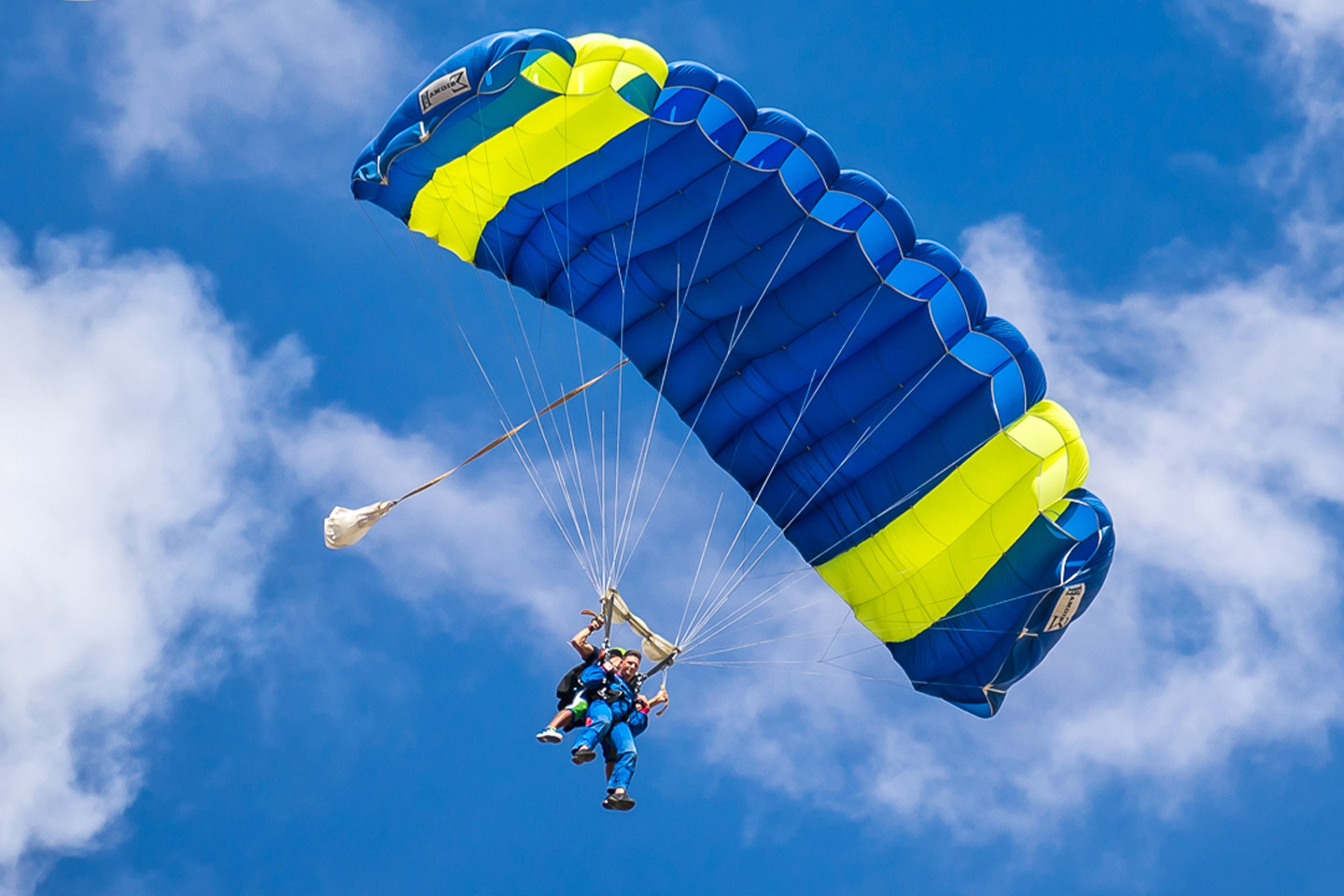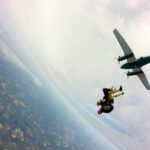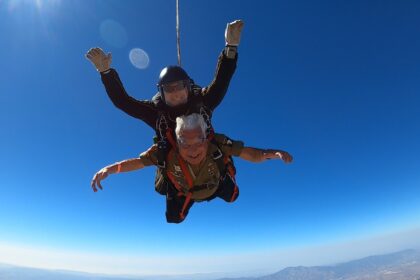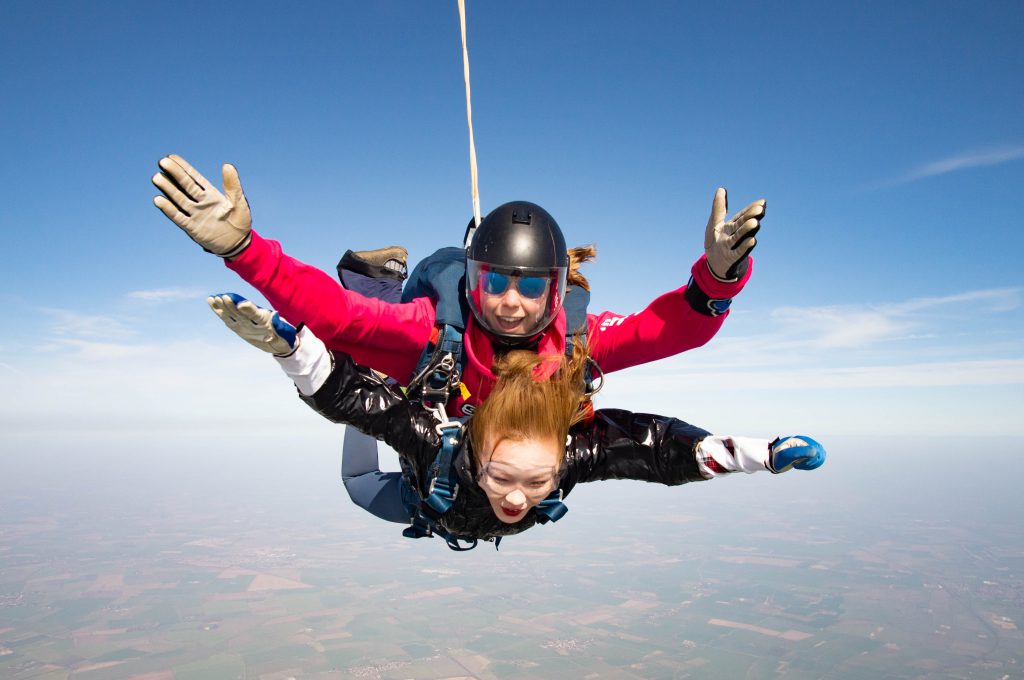When preparing for your first skydive, understanding the parachute weight limit is one of the most important safety steps you can take. Whether you’re a first-time skydiver, adventure traveler, or an instructor planning tandem jumps, knowing how much weight a parachute can safely hold ensures both safety and performance.
In this complete guide, we’ll explore seven essential facts about parachute weight limits, including regional rules, gear load, and tips for those close to the limit.
- Why Parachute Weight Limits Matter
- Table of Contents
- Fact 1 – Manufacturer’s Maximum Load Ratings
- Fact 2 – Tandem vs Solo Weight Limits
- Fact 3 – Weight Includes Gear, Clothing & Equipment
- Fact 4 – Fitness, Body Composition & Safety Margins
- Fact 5 – Regional Weight Limit Variations (India, Florida, California & More)
- Fact 6 – Can You Skydive If You Weigh 250 lb or Over 100 kg?
- Fact 7 – Weight Limits for Solo Jumps & Instructor Rules
- FAQs About Parachute Weight Limits
- Tips for Jumpers Near the Weight Limit
- Conclusion: Safety Always Comes Before Thrill
Why Parachute Weight Limits Matter
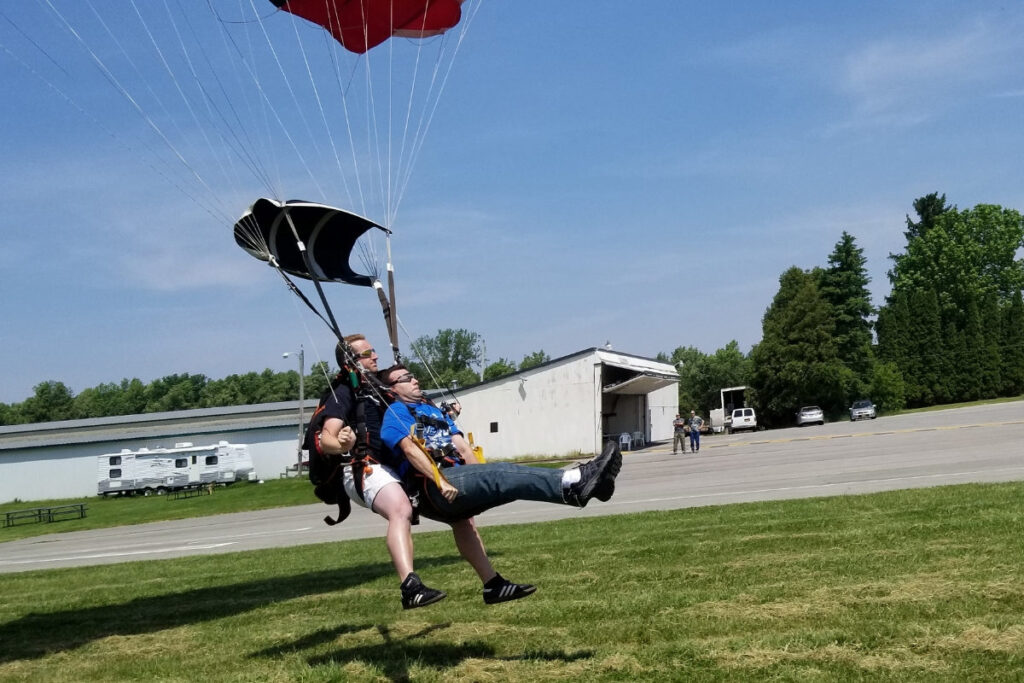
Table of Contents
Every parachute is designed with a specific weight range for safe operation. Exceeding this range can increase the speed of descent, affect canopy control, and put unnecessary stress on parachute lines and fabric.
When a parachute carries too much weight, it can deploy faster, but the landing impact becomes harder—raising the risk of injuries or canopy failure. Manufacturers and aviation authorities therefore enforce strict limits to maintain consistent safety standards across all jumps.
Fact 1 – Manufacturer’s Maximum Load Ratings
Each parachute system comes with a manufacturer-specified load rating, typically measured in pounds or kilograms. This rating includes both the jumper’s body weight and all gear combined.
- Sport parachutes: Usually rated for 90–115 kg (200–250 lb).
- Tandem parachutes: Can handle around 180–230 kg (400–500 lb).
- Student parachutes: Often built for extra durability, supporting around 120–130 kg.
Always check the canopy placard or equipment manual to confirm your parachute’s limit. Flying above these numbers can void insurance and compromise safety.
Fact 2 – Tandem vs Solo Weight Limits
Tandem jumps allow heavier participants compared to solo jumps because they use larger canopies and reinforced harness systems.
Typical limits include:
| Jump Type | Average Max Weight | Reason |
|---|---|---|
| Tandem Skydive | 100–230 kg (220–500 lb) | Larger canopy supports two people |
| Solo Jump | 90–115 kg (200–250 lb) | Designed for one person only |
| Training Jump | Up to 120 kg | Depends on parachute model and DZ policy |
If you’re a beginner, tandem skydives are ideal because they provide more flexibility in weight while maintaining high safety standards.
Fact 3 – Weight Includes Gear, Clothing & Equipment
A common mistake for new skydivers is assuming the weight limit applies to body weight only.
In reality, the total system weight includes:
- The jumper’s body weight
- Parachute system (main, reserve, harness, AAD)
- Helmet and altimeter
- Jumpsuit and boots
For example, if your parachute system weighs 13 kg and your total limit is 100 kg, your body weight should not exceed 87 kg. Always measure the fully equipped weight before the jump to stay within the limit.
Fact 4 – Fitness, Body Composition & Safety Margins
While weight is crucial, body composition and fitness also play an important role.
Heavier but fit individuals often handle higher speeds and impact better than unfit jumpers at the same weight.
Maintaining proper core strength and balance helps with canopy control, smoother landings, and stable freefalls.
It’s smart to stay a few kilograms below your parachute’s maximum limit to provide a safety buffer for gear variations or wind changes.
Fact 5 – Regional Weight Limit Variations (India, Florida, California & More)
Skydiving weight limits can vary based on location and local aviation regulations:
- India – Most drop zones set a parachute weight limit of 95–100 kg for solo jumps and up to 110 kg for tandem jumps.
- Florida (USA) – Many centers accept up to 230–240 lb (104–109 kg) for tandem jumps.
- California (USA) – Some facilities allow jumpers weighing up to 250 lb (113 kg), though extra fees may apply.
Always confirm the specific rules of your drop zone, as local conditions such as altitude, wind, and equipment type can influence the final limit.
Fact 6 – Can You Skydive If You Weigh 250 lb or Over 100 kg?
Yes — but with some limitations.
Most drop zones can safely accommodate jumpers up to 250 lb (113 kg) using tandem parachute systems designed for higher loads. However:
- You’ll need to inform the operator in advance.
- Special harness adjustments or larger canopies may be required.
- Some centers charge an extra “weight surcharge” for heavier jumpers to offset additional equipment wear.
If you’re over 250 lb, look for weight-inclusive drop zones that use modern tandem rigs built for 500 lb+ total loads.
Fact 7 – Weight Limits for Solo Jumps & Instructor Rules
For solo or AFF (Accelerated Freefall) skydives, limits are stricter.
Training centers typically set the solo weight cap between 90–105 kg (198–231 lb). This ensures:
- Controlled canopy deployment
- Easier student instruction
- Better freefall stability
Skydiving instructors also need to maintain certain physical standards since they handle both gear and student weight during training jumps.
FAQs About Parachute Weight Limits
1. How much weight can a parachute hold?
Most sport parachutes safely support 200–250 lb (90–115 kg). Tandem parachutes can handle up to 500 lb (230 kg) combined.
2. Can I skydive if I weigh 250 lb?
Yes, in many drop zones — but you’ll likely need a tandem jump with reinforced equipment and must inform your instructor in advance.
3. Can you skydive over 100 kg?
Yes, but always check the local weight policy. Some centers limit solo jumps below 100 kg but allow tandem jumps up to 113 kg or more.
4. What is the parachute weight limit in India?
In India, most drop zones cap solo skydivers at 100 kg and tandem jumpers at 110 kg, depending on conditions and gear.
5. What is the minimum weight for skydiving?
Most operators require at least 40–45 kg (88–100 lb) to ensure proper harness fit and canopy control.
Tips for Jumpers Near the Weight Limit
- Always disclose your exact weight during booking.
- Choose breathable, light gear to stay within range.
- Do a pre-jump consultation with your instructor.
- Work on flexibility and balance for smoother landings.
- Never attempt to hide your weight — safety comes first.
Conclusion: Safety Always Comes Before Thrill
Understanding the parachute weight limit isn’t about restriction — it’s about ensuring your skydiving experience is safe, smooth, and unforgettable.
By staying within your gear’s load capacity, maintaining fitness, and working closely with your instructor, you’ll enjoy every second of your jump with total confidence.
For more insights, explore our guide on Height of Parachute Jump and other expert resources on SkydiveGuides.com — your ultimate destination for trusted, professional skydiving advice.
